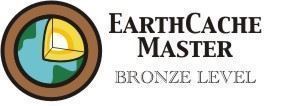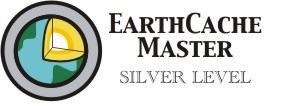Earthcache
Pont de Pierre
L’endroit ou est situé le Pont de Pierre fait partie du Bouclier canadien dans la province de Grenville.
Le Bouclier canadien
Le Bouclier canadien forme le noyau du continent et couvre environ la moitié du Canada. Il est formé de roches précambriennes qui sont restées stables depuis. La surface des roches y est ondulée et découpée en vallées. L’élévation générale du Bouclier est d’environ 300 mètres au-dessus du niveau de la mer. Sept provinces géologiques divisent le Bouclier. Elles sont les provinces du lac Supérieur, des Esclaves, de l’Ours, de Churchill, de Nain, de Grenville et du Sud. Celles-ci se distinguent les unes des autres par des différences importantes de direction dans leur structure interne et par les types de plissements qu’elles ont subis.
Le Bouclier canadien est riche en métaux et minéraux de toutes sortes. En effet, la province du lac Supérieur est l’une des plus importantes sources de métaux au Canada. On y trouve des gîtes de cuivre, de zinc, d’or, de fer et d’argent. De plus, dans la province du Sud, on trouve une des plus importantes régions minières du monde, celle de Sudbury où l’on trouve du nickel et du cuivre. Dans la province des Esclaves, on y exploite d’importants gisements aurifères. Dans la partie nord-ouest de la province de Churchill, on y a découvert la présence de cuivre, de plomb, de zinc, d’uranium, de nickel, de cobalt et de tungstène. Les roches de la province de l’Ours renferment des gisements d’uranium, de cuivre, de chalcocite,, de borite et de chalcopyrite. De son côté, la province de Grenville, renferme des gîtes de magnétite, de pegmatite à teneur de mica, de feldspath, d’apatite, d’uranium, de titane, ainsi que des sulfures de zinc et de plomb. Finalement, pour ce qui est de la province de Nain, on y a découvert peu de gîtes minéraux.
Historique du Pont de Pierre.
La formation géologique du Pont de Pierre remonte à l’époque de la dernière glaciation.
Une rivière sous-glacière, cherchant à se frayer un chemin sous la calotte de glace, parvint à percer un passage à travers le roc. À la faveur de cassures ou de fêlures dans ce dernier, la partie supérieure de ce passage, en forme de petit tunnel, constitue aujourd'hui l’arche de ce pont.
Depuis beaucoup d’eau a coulé sous ce pont. Il se peut que les abords de l’arche aient été travaillés de mains d’homme, bien qu’aucun document ne le prouve.
Pour inscrire cette Earthcache comme trouvée, vous devez répondre aux 4 conditions suivantes.
1=Quelle est la longueur du pont? 10 mètres, 40 mètres, ou 75 mètres.
2= Quelle est la hauteur entre le tablier et l’eau? 7 mètres, 25 mètres, ou 62 mètres.
3= À combien d’années remonte la formation géologique du Pont de Pierre?
4= Joindre à votre log une photo de votre GPS et le Pont de Pierre comme arrière-plan.
Envoyez moi les réponses par courriel et attendez la confirmation avant de l’inscrire comme trouvée et d’y ajouter votre photo avec votre log.
English version.
Earthcache
Pont de Pierre
The place where is located the Pont de Pierre belongs to the Canadian Shield in the province of Grenville.
The Canadian Shield
The Canadian Shield forms the core of the continent and covers approximately half of Canada. It is made of Precambrian rocks which remained stable since. The surface of the rocks corrugated and is cut out there in valleys. The general rise in the Shield is approximately 300 meters above the sea level. Seven geological provinces divide the Shield. They are the provinces of the lake Supérieur, the Slaves, the Bear, Churchill, Dwarf, Grenville and the South. Those are distinguished from each other by important differences in direction in their internal structure and by the types of crumplings which they underwent. The Canadian Shield is rich in metals and minerals of all kinds. Indeed, the province of the lake Supérieur is one of the most important sources of metals in Canada. One finds money and iron, gold, zinc, copper lodgings there. Moreover, in the province of the South, one finds one of the most important mine fields of the world, that of Sudbury where one finds nickel and copper. In the province of the Slaves, one exploits important gold bearing layers there. In the north-western part of the province of Churchill, one discovered there the presence of copper, lead, zinc, uranium, nickel, cobalt and tungsten. The rocks of the province of the Bear contain layers of uranium, copper, chalcocite, borite and chalcopyrite. On its side, the province of Grenville, contains lodgings of magnetite, pegmatite with uranium, apatite, feldspar, mica content, of titanium, as well as lead and zinc sulphides. Finally, as regards the province of Dwarf, one discovered few mineral lodgings there.
History of the Pont de Pierre.
The geological formation of the Bridge of Pierre goes up at the time of the last glaciation. A river under-refrigerator, seeking to cut through a path under the cap of ice, managed to bore a passage through the rock. With the favour of breaks or cracks in this last, the upper part of this passage, in the shape of small tunnel, constitutes today the arch of this bridge. Since much of water ran under this bridge. It may be that the accesses of the arch were worked with hands of man, although no document proves it.
To register this Earthcache as found, you must answer the 4 following conditions.
1=How long is the bridge? 10 meters, 40 meters, or 75 meters.
2= how much meters between water and the apron of the bridge? 7 meters, 25 meters, or 62 meters.
3= At how much years goes up the geological formation of the Pont de Pierre ?
4= Join to your log a photography of your GPS and the Pont de Pierre in background.
Send me the answers by email and wait the confirmation before registering it as found and adding your photograph to it.
| Je suis fier d'être |
 |
| Je suis fier d'être |
 |
| Je suis fier d'être |
 |
| J'ai atteint le plus haut niveau de la GSA: |
 |
PAT: félicitations à PIOUI pour son premier Pat.